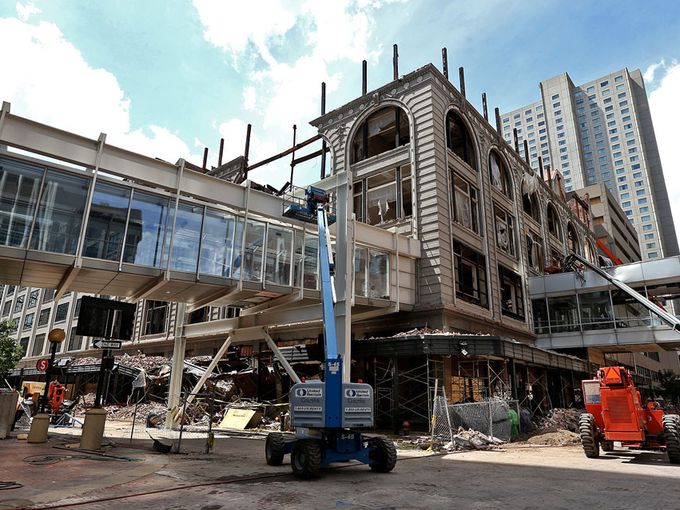
by The Real Estate Appraisal Group | Apr 30, 2015 | Real Estate Terminology, Uncategorized
What is a Home Inspection? What is a Site Visit? Which One Do I Need? As real estate appraisers, clients are sometimes surprised at exactly how much of their property we need to see. Sometimes clients are surprised when we tell them the appraisal will take more than 5 minutes, other times they’re surprised when we tell them it won’t take 3 hours. Regardless of how long a home inspection or a real estate appraisal takes, we often get questions like: “So you’re not going to get on your back and squeeze through our crawl space to look for rot?” “You didn’t bring a ladder?” How will you get on the roof to see the chimney?” “How will you make sure our pool is working? You didn’t bring a snorkel? While there are a few similarities between the two, and in some places appraisers and inspectors look for the same thing, they ultimately serve very different purposes. A site visit is only part of a real estate appraisal, while a home inspection can usually be started and finished directly on site. In this short video, we explain the difference between a home inspection and a site visit. https://www.youtube.com/watch?v=9ajR0ytFARY For more short-and-sweet informative videos, visit our YouTube Channel. Jonathan Montgomery is the founder and president of the The Real Estate Appraisal Group, and has been a real estate professional since 1998. He has been a broker, an investor, and currently works full-time as an appraiser. He enjoys handling real estate appraisals in Washington D.C., Southern Maryland, and Northern Virginia. #TREAGroup...

by The Real Estate Appraisal Group | Apr 22, 2015 | Real Estate Terminology, Uncategorized
WASHINGTON D.C. – The nation’s capitol. At the heart of the country, D.C. hosts some of the most beautiful architecture you’ll find anywhere in the world. As real estate appraisers, we find a lot of variety in D.C.- but we also find a lot of the same. Whether you want to become an expert on architecture in the district, or you’re just starting a career in real estate- as long as you learn to recognize these seven most common housing designs, you’ll do just fine. 1. Federal Housing Federal properties are as simplistic as it gets in architecture. Starting to rise in DC in the early 1800’s, federal style houses were both easy and quick to build. They can be distinguishing from the similar Victorian-style houses popular in DC by their modest scales and low-stoops. Federal housing properties are usually symmetrical, 1-2 stories tall, and hold 1-2 bedrooms. 2. Victorian If you’ve ever been impressed by the architecture of a row house in Washington D.C., it was most likely a Victorian. Often found in D.C.’s historic districts, Victorian style houses differ from federal houses in that they often “pop out” of the typical flat-row housing in any way they can- they often have large window boxes or bay-windows. Curved roof peaks are another give-away. Victorian style houses are typically 2-3 stories tall, and can house as many as 5 bedrooms in the nicer ones. 3. Tudor Revival Tudor-style homes started popping up in D.C. in the early 1900’s. Recognizable by their pointed roofs and European (almost medieval) look, Tudor properties often have...

by Jonathan Montgomery | Mar 26, 2015 | Real Estate Terminology, Uncategorized
What’s the real difference between leasehold, leased fee, and fee simple? https://www.youtube.com/watch?v=UY13t0QHcac&feature=youtu.be Fee Simple Fee simple is the form property ownership people are most familiar with. The term means you have absolute ownership- you own the rights to the entire property, including the land and buildings on it. This is often called “The bundle of rights.” You can occupy the property, you could rent out a room, you could paint it purple. And provided your local laws allow it; you can re-zone it, you can sub-divide it, add square footage, tear it down, whatever you want. It’s your property. Leased Fee & Leasehold When there is a lease involved, the landlord has leased fee ownership, and the tenant has leasehold rights. When a property owner wants to lease out a portion of their property, usually they do so because they want to make money. They want to collect a fee. They want to collect that fee from someone who wants to occupy their property- that person want’s to hold the rights to live there, or to occupy the property. If you get in an argument with your landlord (who has leased fee ownership) and he or she tells you to pack your things and leave, you don’t have to. Assuming the lease says so, you have the rights to occupy the property (why would you sign a lease that says otherwise?), meaning your landlord would have to formerly evict you. Leasehold rights are less significant when we are discussing renting a room or house. Typically they are more important when you are talking about owning a property where you own...

by Jonathan Montgomery | Mar 11, 2015 | Real Estate Terminology, Uncategorized
Are remodeling and renovating different? Yes they are. These two terms are often used interchangeably in real estate. As real estate appraisers, whenever we see the word “remodeled” in one of our comparable descriptions, we always do a little fact-checking just to be safe. After scrolling through tons of comparable photos for every report, we find that more often than not, the agent’s description is wrong. What is a Renovation? ‘ “Renovation” is a rather specific term, literally meaning “to make new again.” The term is (or should be) mostly applied to cosmetic changes- new kitchen faucets, counter-tops or cabinet handles, interior paint… these are all examples of renovation. Renovations don’t normally require any real structural work, and are almost always cheaper and less time-consuming then remodeling. We see lines like “renovated with new paint!” in listing descriptions a lot- but getting a new cabinet or a fresh coat of paint alone is not a renovation. Renovation speaks more to a bigger picture- to take an out-of-date aspect of a property and update it into the modern age. What is Remodeling? Remodeling means “to change the structure of.” The couple at the top of this article are definitely remodeling. If you add carpet, siding, and a ceiling to your basement (effectively making it a finished basement), that’s remodeling. Getting an addition to your property is remodeling. Take a look at the picture: These people went all out. The cabinets have been completely redone, as well as the tiles on the wall, all of the appliances… they even added an island. They did not “renovate” to update a property into the...

by Jonathan Montgomery | Feb 26, 2015 | Real Estate Terminology, Uncategorized
Real estate, like most things, starts to deteriorate with age. The majority of homes in this country are built to last a minimum of 60 years. This doesn’t mean that houses older than 60 years start to lose value based on age alone. Some people are more interested in the “fine wine” of real estate- homes in a historic district. https://www.youtube.com/watch?v=jzM232QJkRU Here’s a quick video from the field summarizing a few points form this article. What is a Historic District? The first ever historic district was established in 1931 in the city of Charleston, California. The city created a Board of Architectural Review (the BAR), tasked with: “the preservation and protection of the old historic or architecturally worthy structures and quaint neighborhoods which impart distinct aspect to the City of Charleston.” The specifics of these rules vary from place to place, but they ultimately work to achieve the same goal. Historic districts exist to preserve the character and feeling of an older neighborhood- to help it maintain it’s vintage feel. I Work in Real Estate. What Does This Mean For Me? Historic districts are created to define an area where several new codes and restrictions are set in place to preserve an area’s character. Let’s say we’re an agent showing a client a lovely little townhome in Georgetown. While they love the property, you overhear them discussing plans to paint the house pink. This isn’t a condo. There isn’t a home owners association telling you what you can and can’t do with your home. Except for the historic district codes. We’ll state again that these codes...

by Jonathan Montgomery | Feb 19, 2015 | Real Estate Terminology, Uncategorized
If you work in real estate, you should have a decent idea of what adds value to a home and what doesn’t. Even if you don’t work in real estate, you may still understand that remodeling a kitchen will (usually) increase your value more than, say, adding a closet. For anyone who doesn’t know, there are typically three major types of rooms that will get you the most bang for your buck when updating a house: Kitchens & Bathrooms Kitchens are easy to identify- there’s usually a set of appliances, counters, cupboards, faucets… we don’t really need to explain what a kitchen is. Having an updated kitchen will basically always add value to a home. For the most part, it’s pretty easy to tell if a room is a bathroom or not. Is there a toilet? It’s a half-bath. Is there a toilet AND a shower/tub? It’s a full bath. Full baths are typically worth more than half-baths- and that’s all you need to know about bathrooms. …but what about bedrooms? What makes a bedroom a bedroom? There are four major requirements that a bedroom must meet to be considered a bedroom. 1. The length and width of a bedroom must be at least 7 feet in both directions. 70 sq ft is the assumed minimum in most cases, but technically speaking, 7×7 length by width is the absolute bare minimum for a bedroom (although I’d still rather not stay in one that small.) 2. A bedroom ceiling must be at least 7 feet tall. When it comes to attic...









Recent Comments